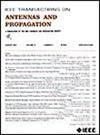High-Performance Hybrid-FDTD Investigation for Characterizing the Electromagnetic Transmission Attributes of Media With Arbitrary Shapes
IF 4.6
1区 计算机科学
Q1 ENGINEERING, ELECTRICAL & ELECTRONIC
引用次数: 0
Abstract
Accurately and effectively analyzing the electromagnetic properties of media with arbitrary shapes has always been a difficult and challenging problem in the field of electromagnetic simulation. Traditional methods often encounter issues such as low computational efficiency and insufficient accuracy. To address above problems, this article proposes the hybrid finite-difference time-domain (H-FDTD) method based on the Drude two critical points (Drude2CPs) model. The H-FDTD algorithm introduced encompasses the alternating direction implicit finite difference time domain (ADI-FDTD) method and the dispersive contour path finite difference time domain method based on Drude2CP (DCP-FDTD-D2CP). The ADI-FDTD for non-dispersive case leads to an elevation in computational efficiency. The DCP-FDTD-D2CP algorithm is specifically applicable to the dispersion scenario occurring at the interface between metal and dielectric. In this context, the frequency-dependent formulae employ the trapezoidal recursive convolution (TRC) technique. In addition, the rigorous analysis shows that the proposed H-FDTD algorithm is theoretically stable. To validate its efficacy, a series of numerical examples was carried out, specifically involving metal circular waveguides and slotted coaxial lines. The obtained results indicate that the relative error of this method is maintained below 1%, and the computational efficiency is enhanced by 60% in comparison with the traditional finite-difference time-domain (FDTD) algorithm. Consequently, this method exhibits the characteristics of stability, high precision, and high efficiency. Moreover, it is convenient for simulating and analyzing complex structures.任意形状介质电磁传输特性的高性能混合时域有限差分研究
准确有效地分析任意形状介质的电磁特性一直是电磁仿真领域的难题和挑战。传统方法经常遇到计算效率低、精度不够等问题。针对上述问题,本文提出了基于德鲁德两个临界点(drude2ps)模型的混合时域有限差分(H-FDTD)方法。介绍的H-FDTD算法包括交替方向隐式时域有限差分法(ADI-FDTD)和基于Drude2CP的色散轮廓路径时域有限差分法(DCP-FDTD-D2CP)。对于非色散情况,ADI-FDTD提高了计算效率。DCP-FDTD-D2CP算法特别适用于金属与介质界面处的色散情况。在这种情况下,频率相关公式采用梯形递归卷积(TRC)技术。此外,严格的分析表明,所提出的H-FDTD算法在理论上是稳定的。为了验证其有效性,进行了一系列数值算例,具体涉及金属圆波导和开槽同轴电缆。结果表明,该方法的相对误差保持在1%以下,计算效率比传统时域有限差分(FDTD)算法提高了60%。因此,该方法具有稳定性好、精度高、效率高等特点。此外,它还便于对复杂结构进行模拟和分析。
本文章由计算机程序翻译,如有差异,请以英文原文为准。
求助全文
约1分钟内获得全文
求助全文
来源期刊
CiteScore
10.40
自引率
28.10%
发文量
968
审稿时长
4.7 months
期刊介绍:
IEEE Transactions on Antennas and Propagation includes theoretical and experimental advances in antennas, including design and development, and in the propagation of electromagnetic waves, including scattering, diffraction, and interaction with continuous media; and applications pertaining to antennas and propagation, such as remote sensing, applied optics, and millimeter and submillimeter wave techniques

 求助内容:
求助内容: 应助结果提醒方式:
应助结果提醒方式:


